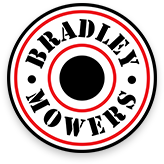Americans are obsessed with lawns. In fact, the lawn is the most grown crop in the United States. This is ironic since people cannot eat grass. Nothing is manufactured from grass. However, Americans spend billions of dollars and countless hours on their lawns each year.
Lawns are the one crop grown in the United States that the sole purpose is to make people look good in front of their neighbors and feel good about themselves. It is not enough to have healthy grass. All it needs to be similar in type. There should be no weeds.
The ideal grass length is 1 1/2 inches tall. Grass should be neatly edged. All of this means that people must dedicate time and energy to care for it. Unfathomable amounts of freshwater are used every year to water grass. Having a nice lawn is the hallmark of American homeownership.
Why Do Americans Put So Much Importance on Lawn Maintenance?
The condition of a homeowner's lawn plays a role in their status within their immediate neighborhood and their community.
Lawns link neighbors together and form neighborhoods. They are an indicator of social and economic character. This becomes an indicator of property value and potential resale value.
In America, lawns show success. They are the physical embodiment of the idea of the American dream. If you have a well-manicured lawn, you are telling the world that you have the leisure time and the financial resources to not only own your home but also keep the grass looking nice.
There is a uniformity to a well-maintained lawn that signifies a desire to belong to the whole. Inasmuch as Americans have a reputation for a maverick-like behavior and a strong sense of individuality, they value belonging to and feeling part of something bigger.
There is a connection between a properly maintained lawn and showing that one is a good neighbor. If you keep your lawn nice, your neighbor keeps their lawns nice. The entire neighborhood will look and feel nice, so home values rise.
In many communities, homeowner associations affect how lawns should be maintained. Their job is to guarantee that the physical representation of a successful status is maintained. If a homeowner's lawn does not meet the standards, serious fines can be levied. Sometimes, ownership of their property could be in jeopardy.
Lawns Are a Relatively Modern Invention
Prior to the Civil War, front lawns were uncommon. If they existed, they were more or less an experiment by the wealthy in revolutionizing their landscape.
Lawns in the United States eventually started to reflect what was seen in Europe as a sign of what success meant. They copied the aesthetics seen in literature and landscape paintings.
Today, there is a massive industry that exists around lawn care and management. The American landscape aesthetic has been transported around the world.
Some have argued that lawns waste precious space that could be used for crops. Time will tell if the American obsession with lawns will continue or if a new trend will appear.
